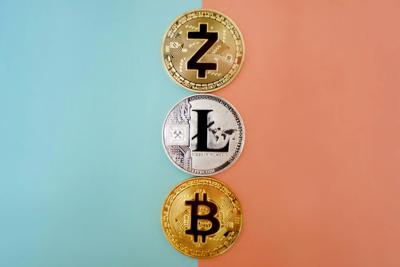
Though many cryptocurrencies have grown into prominent market figures, these digital assets largely rely on conversion rates to understand their value. Most assets like Bitcoin are interpreted compared to the United States dollar, making the conversion rate a crucial metric for evaluating the cryptocurrency. In a sense, it is changing how individuals and businesses interact with money.
Supply and Demand
As it stands, cryptocurrencies are fundamentally linked to supply and demand dynamics. By limiting supply and creating interest in their use, tokens like Bitcoin have grown to attract widespread investor appeal. While crypto has largely been treated as another avenue for investment, leaders like Bitcoin demonstrate its potential to push forward a new wave of financial infrastructure.
People are also reading…
Conversion Rates, DeFi, and Stablecoins
For financial structures to change, the average consumer must have a framework for understanding the value of cryptocurrency. One such metric is the BTC to USD conversion rate. Some payment processing platforms, remittance apps, and freelance platforms can offer instant conversion and pricing based on this rate, facilitating cross-border payments and decentralized finance (DeFi) initiatives.
Decentralized exchanges, while ostensibly separate from traditional currencies, rely heavily on BTC to USD oracles to maintain accurate pricing and smart contract execution. Without a real-world gauge, such as a financial institution or government, it is difficult to interpret the value of Bitcoin on its own — a metric like the dollar is currently a necessity.
Stablecoins take this one step further and are typically pegged directly to fiat currencies like the USD. Due to Bitcoin's market influence, its market activity often responds to shifts in BTC to USD trends. Most of the crypto world still responds to shifts in the price of Bitcoin compared to the United States dollar — when Bitcoin experiences a period of decline or growth, other cryptocurrencies might be expected to follow suit.
Institutional Interest
The conversion rate of BTC to USD alone has driven much of the cryptocurrency’s growth, attracting investor attention from the point it exceeded the dollar in valuation. Today, large businesses may invest in Bitcoin to manage volatility. Some businesses also may enable the use of Bitcoin in seamless checkout and point-of-sale transactions.
Macroeconomic Factors
Bitcoin’s growth has increasingly exposed the cryptocurrency to the influence of macroeconomic events, such as federal rate cuts or inflation. Even the possibility of macroeconomic change can create ripples in the value of Bitcoin — and therefore the rest of the crypto world. At the time of writing in May 2025, Bitcoin has surpassed $97,000, possibly reflecting recent investor optimism and macroeconomic policy shifts.
Bitcoin as an Inflation Hedge
Amid macroeconomic change and shifts in market confidence, for some investors, Bitcoin is seen as a possible hedge against inflation and an alternative in otherwise unreliable scenarios. Cryptocurrency certainly remains a volatile asset but may sometimes be seen as comparatively reliable during particular macroeconomic events.
Cross-Border Exchange
The BTC to USD conversion rate has been especially influential in underbanked regions and international exchanges with unreliable access to USD-based infrastructure. BTC to USD may enable low-fee international settlements without the need for traditional banking intermediaries, making Bitcoin an appealing asset on the global stage. Especially in terms of cross-border trade, Bitcoin may be accelerating change.
A New Way of Interpreting the Market
Through this simple conversion rate, Bitcoin may be reshaping how businesses and consumers engage with financial infrastructure. From institutional investment and adoption to individual reactions to macroeconomic change, Bitcoin might stand as a unique way to approach shifts in the market. When an investor can track the BTC to USD conversion rate accurately and in real-time, they may be equipped to navigate a changing market.















